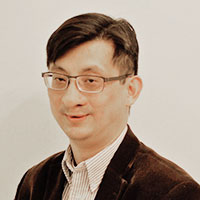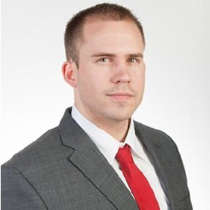 Prof. Jiong Tang will serve as the general conference chair for the American Society of Mechanical Engineers’ international annual design conference in Anaheim CA. The 2019 ASME International Design Engineering Technical Conference (IDETC) and Computers and Information in Engineering Conference (CIE) will take place between August August 18 – 21, 2019 at the Anaheim Convention Center.
Prof. Jiong Tang will serve as the general conference chair for the American Society of Mechanical Engineers’ international annual design conference in Anaheim CA. The 2019 ASME International Design Engineering Technical Conference (IDETC) and Computers and Information in Engineering Conference (CIE) will take place between August August 18 – 21, 2019 at the Anaheim Convention Center.
Month: January 2019
Physical biology at the semiconductor-enabled biointerfaces
 Abstract: Recent studies have demonstrated that in addition to biochemical and genetic interactions, cellular systems also respond to biophysical cues, such as electrical, thermal, and mechanical signals. However, we only have limited tools that can introduce localized physical stimuli and/or sense cellular responses with high spatiotemporal resolution. Inorganic semiconductors display a spectrum of physical properties and offer the possibility of numerous device applications. My group integrates material science with biophysics to study several semiconductor-based biointerfaces. In this talk, I will first pinpoint domains where semiconductor properties can be leveraged for biointerface studies, providing a sample of numbers in semiconductor-based biointerfaces. Next, I will present a few recent studies from our lab and highlight key biophysical mechanisms underlying the non-genetic optical modulation interfaces. In particular, I will present a biology-guided two-step design principle for establishing tight intra-, inter-, and extracellular silicon-based interfaces in which silicon and the biological targets have matched mechanical properties and efficient signal transduction. Finally, I will discuss new materials and biological targets that could catalyze future advances.
Abstract: Recent studies have demonstrated that in addition to biochemical and genetic interactions, cellular systems also respond to biophysical cues, such as electrical, thermal, and mechanical signals. However, we only have limited tools that can introduce localized physical stimuli and/or sense cellular responses with high spatiotemporal resolution. Inorganic semiconductors display a spectrum of physical properties and offer the possibility of numerous device applications. My group integrates material science with biophysics to study several semiconductor-based biointerfaces. In this talk, I will first pinpoint domains where semiconductor properties can be leveraged for biointerface studies, providing a sample of numbers in semiconductor-based biointerfaces. Next, I will present a few recent studies from our lab and highlight key biophysical mechanisms underlying the non-genetic optical modulation interfaces. In particular, I will present a biology-guided two-step design principle for establishing tight intra-, inter-, and extracellular silicon-based interfaces in which silicon and the biological targets have matched mechanical properties and efficient signal transduction. Finally, I will discuss new materials and biological targets that could catalyze future advances.
Biographical Sketch: Bozhi Tian received his Ph.D. degree in physical chemistry from Harvard University in 2010. He is now an associate professor at the University of Chicago, working on semiconductor-enabled fundamental studies of subcellular biophysics and soft matter dynamics. Dr. Tian’s accolades from his independent career include the Inaugural ETH Materials Research Prize for Young Investigators (2017), Presidential Early Career Awards for Scientists and Engineers (2016), and TR35 honoree (2012).
Recent Progress in Black-Box Function Optimization for Industry Problems
 Abstract: One of the most common and important problems in the engineering industry is, arguably, to optimize a black-box expensive-to-evaluate function given a strict budget. The function can represent a real-world experiment or a costly simulation code. Specifically, given a set of potential power plant layouts, how do we find the best layout defined against a set of Quantities of Interest? Given a steam turbine, how do we configure its geometry to achieve the best efficiency? How can we optimize the life of a machine by knowing its design variables and how they connect to damage? Given a set of Computational Fluid Dynamics simulations, can we optimize a blade structure for cooling? The problem of course extends to a broad range of other industries and academia as well. As a different example, borrowed from materials discovery, consider a set of binary alloy lattice points: Which atoms should be placed on said points to discover the ground states? Surely, for all these cases, the faster we achieve high-quality optima (ideally global and robust) in terms of resources, the lower the overall cost.
Abstract: One of the most common and important problems in the engineering industry is, arguably, to optimize a black-box expensive-to-evaluate function given a strict budget. The function can represent a real-world experiment or a costly simulation code. Specifically, given a set of potential power plant layouts, how do we find the best layout defined against a set of Quantities of Interest? Given a steam turbine, how do we configure its geometry to achieve the best efficiency? How can we optimize the life of a machine by knowing its design variables and how they connect to damage? Given a set of Computational Fluid Dynamics simulations, can we optimize a blade structure for cooling? The problem of course extends to a broad range of other industries and academia as well. As a different example, borrowed from materials discovery, consider a set of binary alloy lattice points: Which atoms should be placed on said points to discover the ground states? Surely, for all these cases, the faster we achieve high-quality optima (ideally global and robust) in terms of resources, the lower the overall cost.
Towards answering these questions, at General Electric Research our team has developed and maintain an industry-strength Efficient Global Optimization scheme called “Intelligent Design and Analysis of Computer Experiments” (IDACE) which builds on a time-tested Gaussian Process meta-model called Bayesian Hybrid Modeling (BHM) originally built from Kennedy O’Hagan’s work.
Having introduced the BHM/IDACE framework, we present in detail a set of successful BHM/IDACE industry case studies and compare to other optimization approaches such as Genetic Algorithms. Finally, we go on to discuss a range of recent modifications and enhancements to these tools all driven from real-world customer needs.
Short Bio: Jesper Kristensen works as a Lead Engineer in the Probabilistics and Optimization team at General Electric’s (GE) Research Center in upstate New York. The team is managed by Dr. Liping Wang. He joined the team in the fall of 2015 as a research engineer. Among other projects, he is currently in charge of a $1MM project leading six engineers to ensure GE stays ahead in Probabilistic capabilities including, but not limited to, meta-modeling, optimization, uncertainty quantification, and uncertainty propagation. He is also the project leader on multiple damage modeling efforts to create Digital Twins of steam turbines.
Jesper is a graduate of the Technical University of Denmark (DTU) and holds a Ph.D. from Cornell University in Applied and Engineering Physics advised by Prof. Nicholas Zabaras. His work has generally focused on surrogate modeling and on advanced optimization methods such as adaptive sequential Monte Carlo and Bayesian Global Optimization for improving materials discovery and test cost reduction.
The Challenge of Modeling and Simulation for Molten Salt Nuclear Reactors
 Abstract: The rapidly expanding interest in molten salt reactors (MSRs), particularly as small modular reactors, is resulting in the generation of multiple design concepts with efforts at a variety of early developmental stages. Various companies and organizations in a number of countries are looking at such systems to be safe, economical, and rapidly deployable power systems. For efficient design, operation, and regulation of MSRs it will be necessary to have the ability to simulate reactor behavior across the spectrum from neutronics and fluid dynamics to corrosion and salt phase behavior. MSRs have not been considered since the original prototype, the Molten Salt Reactor Experiment, that ran successfully from 1965-1969 at Oak Ridge National Laboratory, and thus there is little legacy of useful information. Aspects of potential modeling and simulation of future molten salt reactors will be discussed with respect to the unique challenges they present. Among the current needs are extensive thermophysical and thermochemical properties describing salts and other reactor materials. In particular, the ability to compute chemical and phase equilibria (e.g., potential solid phase precipitation) throughout the molten salt loop(s). Activities and opportunities in these areas will be discussed as contributing to development of a knowledge base for molten salt reactor technology.
Abstract: The rapidly expanding interest in molten salt reactors (MSRs), particularly as small modular reactors, is resulting in the generation of multiple design concepts with efforts at a variety of early developmental stages. Various companies and organizations in a number of countries are looking at such systems to be safe, economical, and rapidly deployable power systems. For efficient design, operation, and regulation of MSRs it will be necessary to have the ability to simulate reactor behavior across the spectrum from neutronics and fluid dynamics to corrosion and salt phase behavior. MSRs have not been considered since the original prototype, the Molten Salt Reactor Experiment, that ran successfully from 1965-1969 at Oak Ridge National Laboratory, and thus there is little legacy of useful information. Aspects of potential modeling and simulation of future molten salt reactors will be discussed with respect to the unique challenges they present. Among the current needs are extensive thermophysical and thermochemical properties describing salts and other reactor materials. In particular, the ability to compute chemical and phase equilibria (e.g., potential solid phase precipitation) throughout the molten salt loop(s). Activities and opportunities in these areas will be discussed as contributing to development of a knowledge base for molten salt reactor technology.
Biographical Sketch: Ted Besmann is Professor and SmartState Chair for Transformational Nuclear Technologies, directing the General Atomics Center at the University of South Carolina. Dr. Besmann received his B.E. in chemical engineering from New York University, M.S. in nuclear engineering from Iowa State University, and Ph.D. in nuclear engineering from the Pennsylvania State University. In 1975 he joined ORNL and subsequently became a Group Leader and Distinguished Member of the Research Staff. Besmann’s nearly 40 years at Oak Ridge National Laboratory included a joint appointment in the Nuclear Engineering Department at the University of Tennessee. Besmann has over 160 refereed publications, and is a Fellow of both the American Ceramic Society and the American Nuclear Society. He is chair of the Organization for Economic Cooperation and Development-Nuclear Energy Agency (OECD-NEA) Working Party on Multi-Scale Modeling of Nuclear Fuels and Structural Materials and is vice-chair of their Thermodynamics of Advanced Fuels-International Database program. Dr. Besmann is also Co-Director of the DOE Energy Frontier Research Center led by USC, the Center for Hierarchical Waste Form Materials.